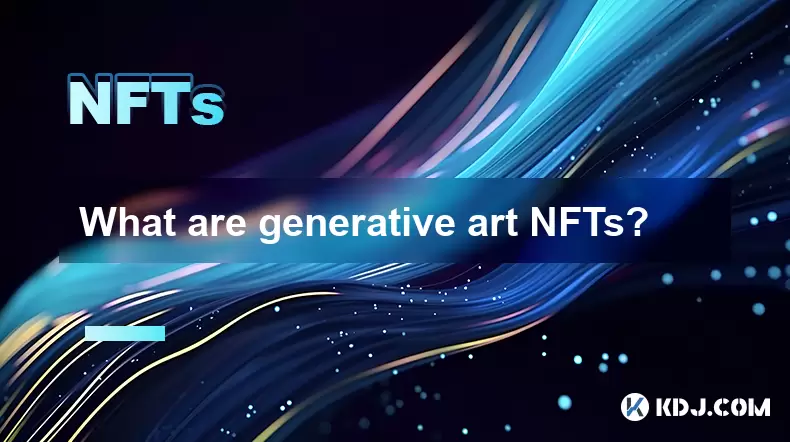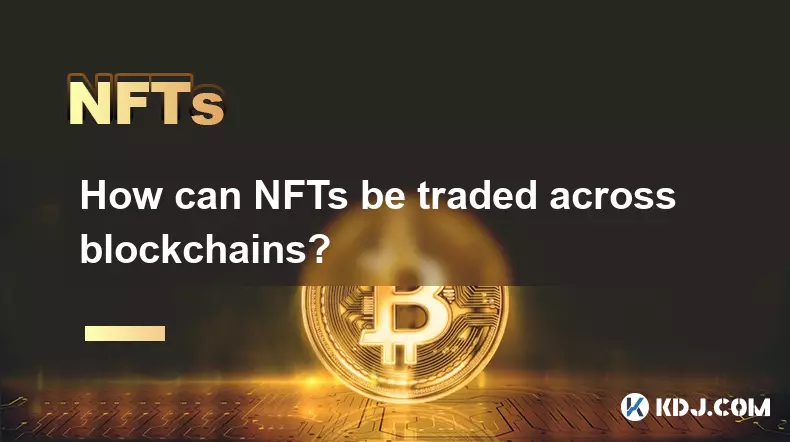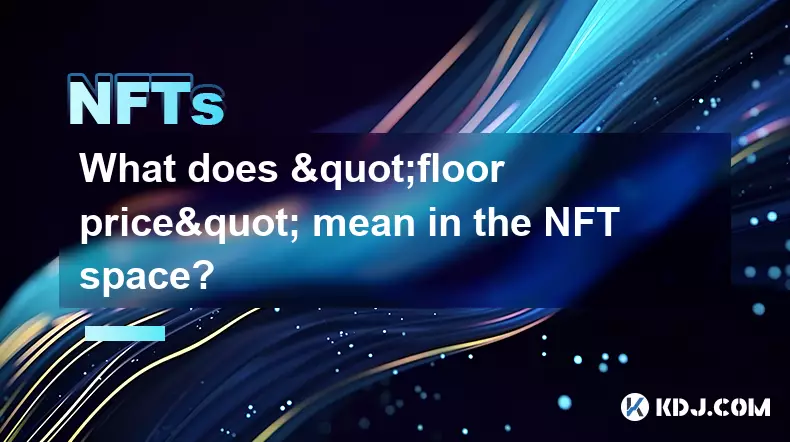-
 bitcoin
bitcoin $109667.069529 USD
-3.03% -
 ethereum
ethereum $3936.685804 USD
-4.07% -
 tether
tether $1.000493 USD
0.01% -
 xrp
xrp $2.771823 USD
-4.74% -
 bnb
bnb $957.805027 USD
-5.34% -
 solana
solana $196.735100 USD
-6.68% -
 usd-coin
usd-coin $0.999727 USD
-0.01% -
 dogecoin
dogecoin $0.227355 USD
-5.12% -
 tron
tron $0.335205 USD
-0.81% -
 cardano
cardano $0.779256 USD
-3.59% -
 ethena-usde
ethena-usde $0.999900 USD
-0.06% -
 hyperliquid
hyperliquid $42.492095 USD
-6.61% -
 chainlink
chainlink $20.501853 USD
-4.34% -
 avalanche
avalanche $28.952606 USD
-11.21% -
 stellar
stellar $0.356038 USD
-3.93%
What are generative art NFTs?
Generative art NFTs use algorithms to create unique digital artworks, offering surprise and blockchain-backed ownership.
Jul 22, 2025 at 07:50 am

Understanding Generative Art NFTs
Generative art NFTs refer to digital artworks that are created using algorithms or computer code, often with an element of randomness or procedural generation. These NFTs (Non-Fungible Tokens) represent unique ownership and authenticity on the blockchain, making each piece distinct and verifiable.
Unlike traditional digital art, where artists manually design every pixel, generative art is typically produced through a set of rules defined by the artist or programmer. These rules can include color palettes, shapes, patterns, and other visual elements that are combined algorithmically to create thousands or even millions of variations. The final artwork is generated automatically when the NFT is minted.
This form of digital creation has gained popularity in the NFT space, especially platforms like Art Blocks, where users can mint generative pieces that they don’t see until after purchase.
The Role of Blockchain and Smart Contracts
The integration of blockchain technology allows for transparent and immutable ownership of these generative art NFTs. Each token is stored on a blockchain such as Ethereum, Solana, or Polygon, ensuring that it cannot be duplicated or altered without consensus.
Smart contracts play a crucial role in this process. When a user mints a generative art NFT, the smart contract executes predefined logic to generate the artwork based on the parameters set by the creator. This ensures that each piece is unique while maintaining the integrity of the collection.
For example, if an artist sets up a generative project with 10,000 possible combinations, the smart contract will ensure that no two users receive the exact same output unless explicitly programmed to do so. This system also prevents manipulation from either the buyer or seller side.
How Generative Art NFTs Are Created
Creating a generative art NFT involves several steps:
- Artists define a set of visual components such as shapes, colors, and styles.
- They write or use existing code scripts (often in JavaScript or Processing) that randomly combine these elements.
- A random seed is generated at the time of minting, which determines how the elements come together.
- The final image is rendered and stored either on-chain or off-chain, depending on the platform.
Some platforms like Art Blocks host curated generative art projects where the code runs entirely on-chain, meaning the entire creative process is executed within the blockchain environment. Others may store metadata off-chain but still verify uniqueness and ownership via blockchain.
One key aspect is that the code itself becomes part of the artwork, giving collectors not just a static image but also a dynamic process that defines its appearance.
Differences Between Generative Art NFTs and Regular NFTs
While all NFTs represent unique digital assets, generative art NFTs differ significantly from manually created ones in both production and perception.
Regular NFTs are usually hand-crafted by artists using tools like Photoshop, Illustrator, or digital painting software. Each piece is intentionally designed, reviewed, and then uploaded to a marketplace.
In contrast, generative art NFTs rely on computational processes. The outcome is unknown until minted, introducing an element of surprise and chance. Collectors essentially buy into a concept or theme rather than a specific image.
Another major difference lies in scalability. While manual creation limits the number of works an artist can produce, generative systems can scale to thousands of variations without compromising quality, enabling mass collectible projects like CryptoPunks or Bored Ape Yacht Club, though those are not strictly generative art NFTs.
Popular Platforms for Generative Art NFTs
Several platforms specialize in hosting and selling generative art NFTs:
- Art Blocks: One of the most well-known platforms, Art Blocks allows artists to upload generative scripts that create unique visuals upon minting. It's divided into three categories: Curated, Playground, and Factory.
- fxhash: A platform built on the Tezos blockchain, fxhash enables artists to deploy generative code and mint interactive pieces that evolve over time.
- OBJKT.com: Another Tezos-based marketplace that supports generative art NFTs, especially popular among creators who value low gas fees and sustainability.
- MakersPlace: Though not exclusively for generative art, MakersPlace hosts many algorithmic and code-based creations.
These platforms provide infrastructure for artists to showcase their work and for collectors to explore procedurally generated art.
FAQs About Generative Art NFTs
What makes generative art NFTs valuable?Their value comes from uniqueness, algorithmic complexity, and the reputation of the creator. Since each piece is one-of-a-kind or part of a limited set, rarity plays a significant role in determining market price.
Can I view my generative art NFT before minting?Usually, no. Most generative art NFTs reveal themselves only after minting to preserve the surprise and fairness of the distribution. However, some platforms offer previews or sample images from the collection.
Are generative art NFTs environmentally friendly?It depends on the blockchain used. Platforms like fxhash and OBJKT.com operate on Tezos, a proof-of-stake network with minimal energy consumption. Ethereum-based NFTs, including those on Art Blocks, have higher environmental costs unless using layer-2 solutions like Immutable X or Polygon.
Is it possible to create my own generative art NFT?Yes. You can use platforms like Art Blocks or fxhash to upload your generative script. Basic coding knowledge in languages like JavaScript or Processing is helpful, though there are tutorials available for beginners.
Disclaimer:info@kdj.com
The information provided is not trading advice. kdj.com does not assume any responsibility for any investments made based on the information provided in this article. Cryptocurrencies are highly volatile and it is highly recommended that you invest with caution after thorough research!
If you believe that the content used on this website infringes your copyright, please contact us immediately (info@kdj.com) and we will delete it promptly.
- AlphaTON's Bold Bet: Toncoin, Balance Sheets, and the Future of Digital Treasuries
- 2025-09-27 04:45:15
- Crypto Kidnapping in Minnesota: A New York Minute Breakdown of the $8 Million Heist
- 2025-09-27 04:25:14
- Avalanche, RUVI, and the Altcoin Rush: What's Fueling the Fire?
- 2025-09-27 04:25:14
- Optimism's Breakdown: Navigating Support Zones for the Next Move
- 2025-09-27 04:45:15
- Linea Price Surges as SWIFT Pilots Blockchain Messaging: A New Era for Global Payments?
- 2025-09-27 04:50:01
- Dogecoin Price Prediction & Crypto Buy: Navigating the Meme Coin Maze
- 2025-09-27 04:50:01
Related knowledge

How can I determine the authenticity of an NFT project?
Sep 23,2025 at 05:18pm
Understanding the Project Team and Their Background1. Research the identities of the team members behind the NFT project. Verified social media profil...

What's the difference between NFTs and traditional collectibles?
Sep 19,2025 at 12:55pm
Digital Ownership and Provenance1. NFTs are built on blockchain technology, which ensures transparent and immutable records of ownership. Every transa...

How can NFTs be traded across blockchains?
Sep 19,2025 at 12:00pm
Understanding Cross-Chain NFT Trading1. Non-fungible tokens (NFTs) are digital assets that represent ownership of unique items on a blockchain. Origin...

How is NFT rarity calculated?
Sep 18,2025 at 07:54pm
Understanding NFT Rarity Metrics1. NFT rarity is determined by analyzing the uniqueness of individual traits within a collection. Each NFT typically c...

What does "floor price" mean in the NFT space?
Sep 22,2025 at 06:36am
Floor Price: A Core Metric in the NFT Marketplace1. The term floor price refers to the lowest current asking price for any item within a specific NFT ...

How do NFTs help content creators?
Sep 18,2025 at 08:00am
NFTs Empower Creators with Ownership and Monetization1. NFTs provide content creators with verifiable ownership of their digital works, ensuring authe...

How can I determine the authenticity of an NFT project?
Sep 23,2025 at 05:18pm
Understanding the Project Team and Their Background1. Research the identities of the team members behind the NFT project. Verified social media profil...

What's the difference between NFTs and traditional collectibles?
Sep 19,2025 at 12:55pm
Digital Ownership and Provenance1. NFTs are built on blockchain technology, which ensures transparent and immutable records of ownership. Every transa...

How can NFTs be traded across blockchains?
Sep 19,2025 at 12:00pm
Understanding Cross-Chain NFT Trading1. Non-fungible tokens (NFTs) are digital assets that represent ownership of unique items on a blockchain. Origin...

How is NFT rarity calculated?
Sep 18,2025 at 07:54pm
Understanding NFT Rarity Metrics1. NFT rarity is determined by analyzing the uniqueness of individual traits within a collection. Each NFT typically c...

What does "floor price" mean in the NFT space?
Sep 22,2025 at 06:36am
Floor Price: A Core Metric in the NFT Marketplace1. The term floor price refers to the lowest current asking price for any item within a specific NFT ...

How do NFTs help content creators?
Sep 18,2025 at 08:00am
NFTs Empower Creators with Ownership and Monetization1. NFTs provide content creators with verifiable ownership of their digital works, ensuring authe...
See all articles










































































